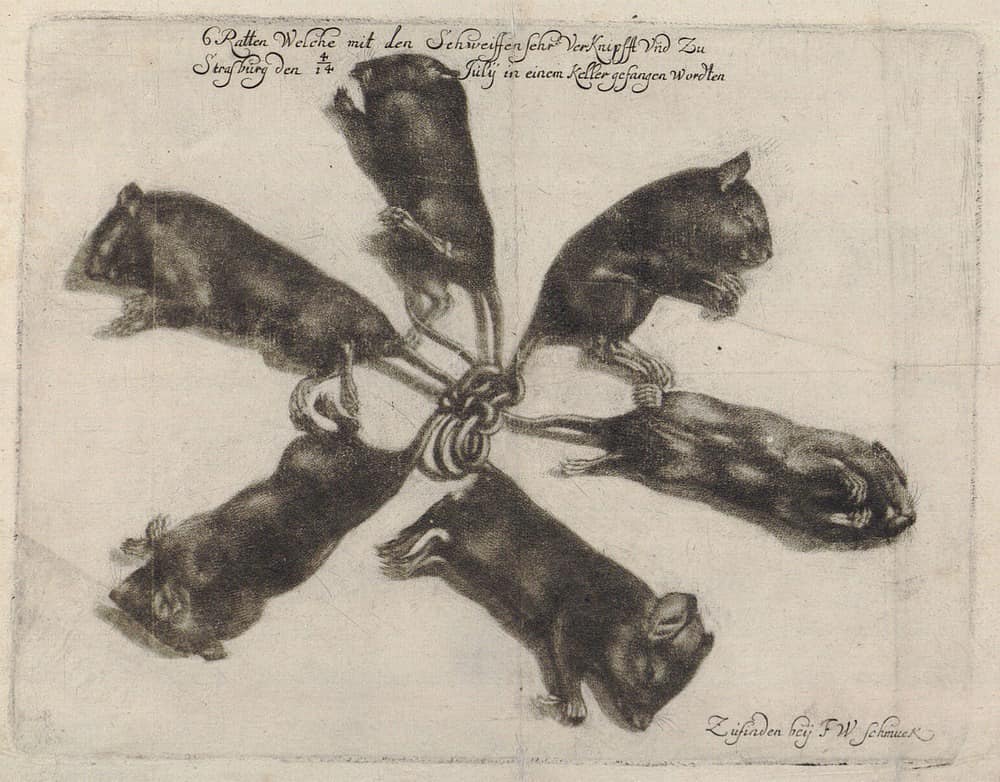A Rat King is a collection of rats which are conjoined or bound and intertwined together in some way. The mysterious discovery of these creatures is quite exciting. The rats‘ togetherness and bounded state can also result from entangled material or sticky like gum or soap or the tails being tied together.
There is also a story based on their discovery. It was a cold January morning in 2005 in the village of Saru in southern Estonia. Farmer Rein Kıiv and his son made a curious discovery. On the sandy floor of their shed, they found a cluster of 16 rats with their tails inexplicably tangled into a knot. The rats were squeaking and struggling to escape, but the more complex they pulled, the tighter the knot became.
The animals were trying to dig themselves out of a narrow burrow, but some of them got buried under the sand in the struggle. Seven of the rats in the tangle were already dead. Rein’s son decided to end the diabolic little scene by killing the rest of the living animals. Rein Kıiv didn’t know then, but he discovered a rare phenomenon called rat kings. They have been sighted for the past five centuries, with approximately 60 such sightings recorded in history books.
A handful of preserved specimens are also kept in various museums. The most prominent known rat king, found in 1828 in a miller’s fireplace at Buchheim, consists of 32 rats and is preserved at Mauritianum in Altenburg, Germany. The rat king of Saru is now located at the Natural History (Zoological) Museum at the University of Tartu, preserved in alcohol and exhibited to visitors. Due to long-lasting exposure to open air, the rats’ tails had dried up, and the knot had become loose. Nevertheless, the heavily compressed parts of the seats testified that the knot had once been very tight.
Rat kings are a freak of nature, but what causes them is debatable. According to one hypothesis, a rat king is created when rats are frightened and nervously grasp each other with their tails. Or when it’s cold, the rats huddle together as they usually do when sleeping, and their seats become glued together by tree sap, blood, food, faeces etc., and the bonding material freeze as the animals sleep.
Once the animals awaken, they try to free themselves by moving in different directions, causing their tails to become entangled in a tighter knot. The explanation has a ring of truth, considering that most rat kings were discovered in colder countries during winter, and they’re usually found in a tight shelter.



